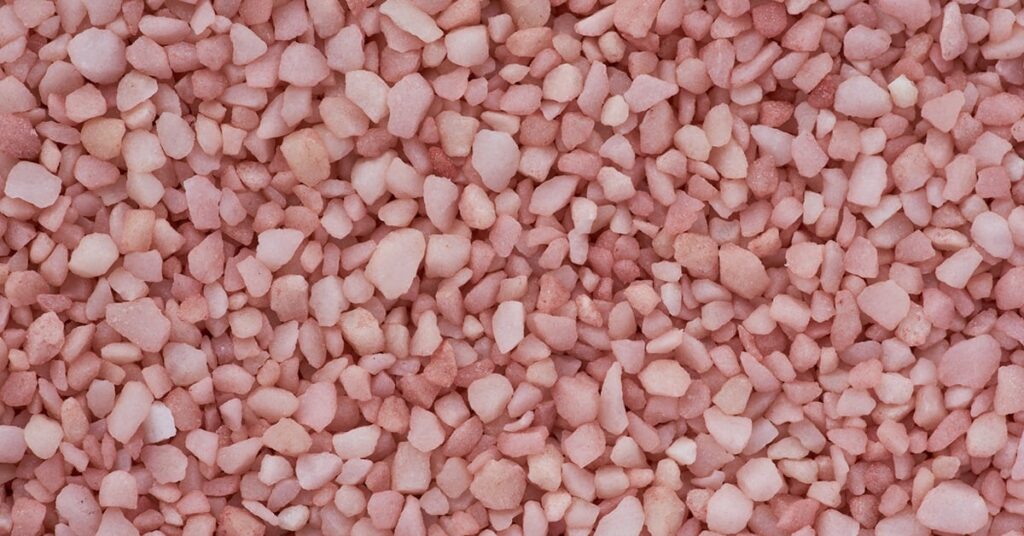Potash includes various mined and manufactured salts that contain potassium in water-soluble form. The name derives from pot ash, that refers to plant ashes or wood ash soaked in water during a pot that was the first means of manufacturing the product before the industrial Era. The word “potassium” is derived from “potash”.
Potash is made worldwide in amounts exceeding ninety million tonnes (40 million tonnes K2O equivalent) annually, largely to be used in fertilizer. Numerous types of fertilizer-potash constitute the one greatest industrial use of the component potassium within the world. Potassium was initial derived in 1807 by electrolysis of caustic potash (potassium hydroxide).
Importance of Potash
Many farmers are not getting the best from their grassland because of a lack of potash. Around 40% of grassland soil samples have below target K levels making them very responsive to added potash. Average applications of potash fertilizers to grassland have fallen by approximately 50% over the last two decades. This can result in costly penalties from under application through reduced yield and quality.
Part of the problem is that any under application may not be evident through deficiency symptoms or identifiable poor growth. Whilst Precision Farming techniques now provide arable farmers with increasingly sophisticated soil information for every part of every field, most grass farmers may be unaware of large differences in PK fertility within the same field. Zonal or hectare grid sampling for PK analysis can be a worthwhile check for grassland.
Whole farm forage yields and Dry Matter % are known with increasing precision, but assessment of individual field performance is often lacking though yields are not difficult to estimate, e.g. by counting bales or silage loads removed from the field.
Quantifying grass yield is of vital importance for both phosphate and potash because manure and fertilizer use need to be adjusted according to off take in the grass. A lack of yield measurement/estimation can also lead to inefficient manure use. There is frequently enormous scope to improve the effectiveness of manures, resulting in very valuable yield improvements or fertilizer cost savings.
New varieties and grass mixtures are constantly improving forage potential but this is not being realized in practice where potash supply is inadequate. This Cinderella input is regularly the limiting factor to grass performance.
Potash is essential for grass yield and high-quality feed value.
Potash is used to regulate the movement and storage of solutes throughout the plant, comparable to the blood system in animals or humans. This is clearly a very wide ranging and vital role, affecting nutrient uptake, photosynthesis, rate of growth and feed value of forage. These functions require larger amounts of total potash in the plant than any other nutrient including nitrogen. If adequate amounts are not present grass will not grow or yield as it should.
A strong relationship exists between nitrogen and potash in plants. The large and worthwhile growth response of grass to nitrogen is dependent upon a balanced supply of potash both to assist nitrogen uptake by the roots as nitrate, as well as supporting the conversion of this into complex proteins needed by animals. Potash is also very important in the microbiological fixation of nitrogen by root nodules in legumes. If clover is required to play a significant part in the sward, the supply of potash is of even greater importance.
In addition to its use as a fertilizer, potassium chloride is important in many industrialized economies, where it is used in aluminum recycling, by the chloralkali industry to produce potassium hydroxide, in metal electroplating, oil-well drilling fluid, snow and ice melting, steel heat-treating, in medicine as a treatment for hypokalemia, and water softening. Potassium hydroxide is used for industrial water treatment and is the precursor of potassium carbonate, several forms of potassium phosphate, many other potassic chemicals, and soap manufacturing. Potassium carbonate is used to produce animal feed supplements, cement, fire extinguishers, food products, photographic chemicals, and textiles. It is also used in brewing beer, pharmaceutical preparations, and as a catalyst for synthetic rubber manufacturing. Also combined with silica sand to produce potassium silicate, sometimes known as water glass, for use in paints and arc welding electrodes.
No substitutes exist for potassium as an important plant nutrient and as an essential nutritional requirement for animals and humans. Manure and glauconite (greensand) are low-potassium-content sources which will be profitably transported solely short distances to crop fields.
We at KERONE have a team of experts to help you with your need for Potash in various products range from our wide experience.

